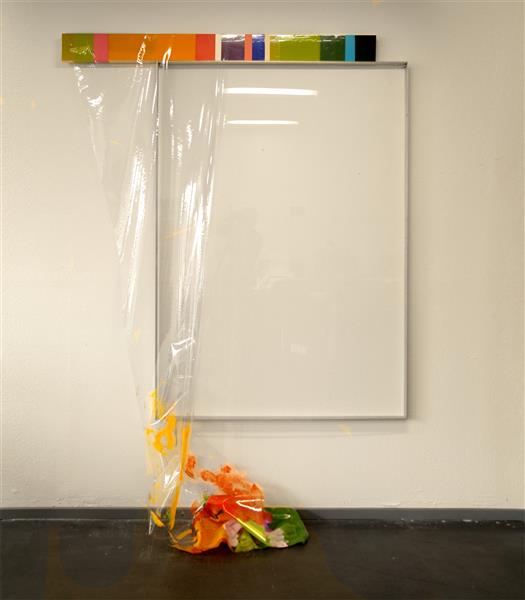2015
Excessivism

description
Excessivism as excessive minimalism, the excess of which is the new norm.
Excessivism is a contemporary art movement, which is a mix of pictorial abstraction and installation. The key idea is a straightforward remark about the excessive consumption of all kinds of resources by society, as well as a reminder of the social inequality that arose due to the flourishing of the financial system. The aesthetic aspect of excessism is based on the pictorial techniques of pop art and kitsch. An excessive amount of material in the works is a specific commentary on the social and political situation through satire and irony. In this case, the artist acts as a subject who has “excessive” experience and has the right to discuss the problem. But the main screaming object is the canvas, through which the master experiments with the three-dimensional environment, trying to overcome the conceptual and physical boundaries of painting, creating unique installations and sculptures.
The founder is the American sculptor Calouste Gödel, who presented this style at the Excessivism Initiative exhibition in 2015. He later presented the “Excessive Manifesto” in the Los Angeles Downtown News.
Works in the style of excessism are created by applying thick layers of oil, acrylic, various solutions to canvases, panels and other heavy structures. The artist also uses glass, vinyl, metal, varnish. Canvases are supplemented with PVC oilcloth, paper and other materials, sometimes hanging down to the floor, or covering the entire surface of the composition. Also, the work may consist of a stretched transparent oilcloth on a stretcher, to which pictorial elements are attached in the form of painted boards.
The following question arises – is the ideologue advocating the rational consumption of natural resources doing the right thing by using an excessive amount of materials?
Key artists: Calouste Gödel, Ai Weiwei, Tzadik Zadikian, Scott Richter, Roxy Payne, Andrew Dadson, John Etter and others.
Key works:
Painting #1. 2015. Calouste Gödel.
Painting #4. 2015. Calouste Gödel.
Painting #5. 2015. Calouste Gödel.
description
A Chinese dissident artist, sculptor, architect, installation master, social and political activist. Ai Weiwei is known throughout the world as one of the creators of the project of the Olympic stadium "Bird's Nest" in Beijing and the author of bright, most often provocative compositions in which he draws attention to critical social problems.Many of the artist's works are criticized by the Chinese communist regime, for which he was repeatedly persecuted by the government. In 2011, Ai Weiwei was arrested at a Beijing airport and searched; Internet resources related to his name were blocked, and he was banned from leaving China. These events caused a great resonance in the world of art. Many artists and art figures supported Weiwei and organized protests in major cities in Europe and America.The works of the Chinese artist are art objects made of a wide variety of things, ranging from a huge chandelier to children's backpacks and sunflower seeds. Each of his works carries a strong emotional and semantic load; it is designed to draw public attention to unresolved problems and injustice in the structure of society in his country. Weiwei’s actual social theme, courage and perseverance in the fight for justice together with his original artistic vision make him one of the most prominent figures in contemporary art.
1957
